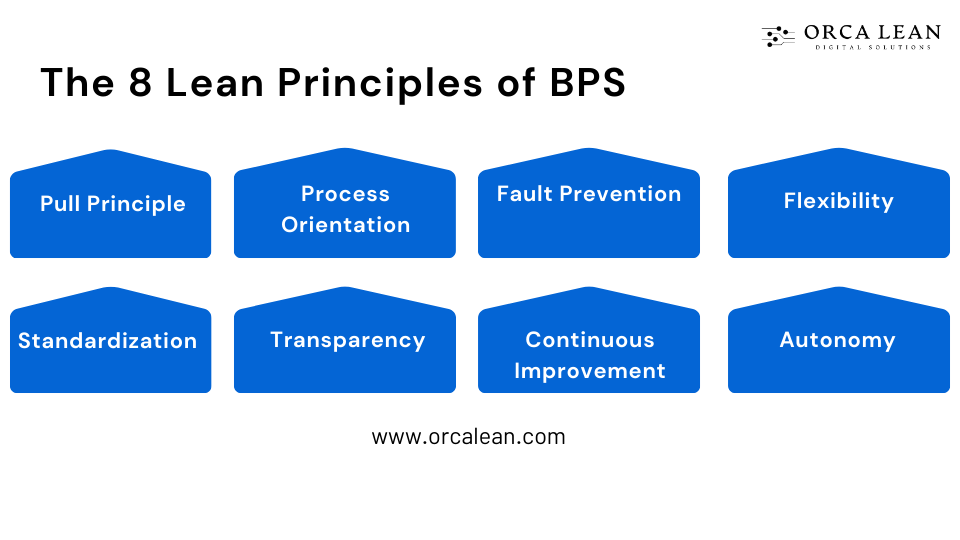Inside the Bosch Production System: 8 Lean Principles That Drive Scalable Excellence
April 2, 2025
In today’s fast-paced manufacturing landscape, staying competitive means mastering the art of lean. Inspired by the Toyota Production System, Bosch has crafted its own approach to operational excellence — the Bosch Production System (BPS). But BPS is not just a replica. It’s a living, evolving system built for scalability, digital adaptability, and cultural alignment across Bosch’s global footprint. Whether you're operating a small production unit or managing a massive assembly plant, BPS offers a consistent framework for lean manufacturing.
This blog unpacks what makes BPS unique — from its guiding concept of “True North” to the eight lean principles that fuel continuous
What Is the Bosch Production System?
The Bosch Production System is Bosch’s customized interpretation of lean manufacturing, deeply influenced by the Toyota Production System (TPS) but developed with Bosch's own challenges and goals in mind.
First introduced in the 1990s, BPS was designed to harmonize lean principles with Bosch’s global operations, enabling consistent process excellence across geographies and business units.
What sets BPS apart is its inherent scalability. While many lean systems work well in highly controlled or localized environments, BPS is tailored to be flexible. It functions seamlessly across both small-batch and high-volume production contexts, making it suitable for Bosch’s vast and varied manufacturing landscape. From automotive components to consumer goods, BPS adapts without compromising its core philosophy.
BPS is also designed for the digital age. It integrates modern lean manufacturing tools and data-driven decision-making to support lean execution, from visual management to real-time performance tracking. But the essence of BPS is not in tools — it’s in how people think and act. It emphasizes long-term cultural transformation, not just process optimization.
Ultimately, BPS isn't a static set of rules. It's a dynamic system that encourages plant leaders and frontline teams to innovate within a structured framework. By connecting daily operations to a shared vision, it empowers teams to make lean manufacturing not just a method — but a mindset.
True North: A Compass, Not a Destination
While many organizations chase static KPIs, the Bosch Production System is driven by a guiding concept known as True North — a strategic vision that provides direction, not a finish line. This idea anchors the entire BPS, ensuring teams make consistent decisions even amid shifting customer demands, supply chain fluctuations, or market disruptions.
Applying True North in manufacturing in BPS is defined by four ambitious but essential targets:
- 100% value creation: Every activity must contribute directly to what the customer values.
- 100% delivery fulfillment: Meeting all delivery promises without exception.
- Zero-defect production: Not just detecting defects — preventing them entirely.
- One-piece flow: A smooth, uninterrupted production rhythm that eliminates waiting, batching, and buffer stock.
These aren’t one-time goals. In fact, they may never be fully realized. But like a compass, they provide a fixed orientation that helps every plant team continuously align their daily actions with long-term purpose.
By aiming toward True North, Bosch ensures that improvement isn’t reactive or incremental — it’s proactive and deeply strategic. Instead of waiting for performance to dip before acting, teams are always moving forward, inching closer to perfection.
The 8 Lean Principles of BPS
To operationalize its vision, the Bosch Production System is built on eight lean principles. These principles serve as behavioral and procedural anchors, enabling every team to pursue continuous improvement while maintaining daily performance.

1. Pull Principle
The Pull Principle ensures that production is always aligned with actual demand — either from the next process step or the final customer. This avoids overproduction, cuts excess inventory, and enables a more responsive and efficient production system. Rather than producing based on forecasts, work is initiated only when needed. This lean technique fosters smoother flows and minimizes waste across the value stream.
- Produce only what’s needed
- Reduces overproduction and inventory
- Enables demand-driven workflows
- Supports lean flow across all stages
2. Process Orientation
BPS focuses on seeing the entire value stream rather than isolated tasks. Each process step is evaluated based on its contribution to the end-to-end flow. This ensures that local optimizations do not cause inefficiencies elsewhere. Cross-functional collaboration and systems thinking are vital here, helping teams identify bottlenecks, streamline handoffs, and improve overall flow effectiveness.
- End-to-end process view
- Avoids siloed optimization
- Promotes systems thinking
- Identifies value stream bottlenecks
3. Fault Prevention
Instead of detecting defects after the fact, BPS emphasizes preventing them entirely. This involves designing error-proof systems, implementing root cause analysis, and embedding quality into every process. Fault prevention not only improves product quality but also reduces costs associated with rework, scrap, and customer complaints. It’s about building a right-the-first-time culture.
- Eliminate factory errors before they occur
- Use mistake-proofing (poka-yoke)
- Reduce rework and waste
- Built-in quality at the source
4. Flexibility
BPS enables teams to adapt quickly to customer needs and changing market conditions. Flexibility is achieved through modular processes, fast changeovers, and empowered teams. This responsiveness prevents overproduction, enhances customer satisfaction, and allows operations to pivot without major disruption. In a volatile market, agility becomes a core competitive edge.
- Rapid adaptation to demand changes
- Supports fast product changeovers
- Minimizes risk of overproduction
- Builds resilience into operations
5. Standardization
Standardization in lean systems ensures stability and repeatability in production. In BPS, standards represent the best-known method for performing tasks and are co-developed and regularly updated by frontline employees. This creates a strong foundation for continuous improvement while ensuring safety, quality, and efficiency. When everyone follows the same process, problems become easier to detect and resolve. To explore How Standard Work Practices Transform Multi-Product Production Lines, refer to our detailed blog.
- Defines the best current method
- Developed with operator input
- Makes performance measurable
- Enables consistent quality
6. Transparency
Processes and communication in BPS are kept simple and visible. A transparent process allows deviations to be detected at a glance. Visual management tools, standardized workboards, and real-time performance indicators ensure that everyone can quickly understand the current status and act when issues arise. The simpler and clearer the process, the faster problems are solved.

- Simple, self-explaining processes
- Visual management tools
- Immediate deviation detection
- Supports fast, informed decisions
7. Continuous Improvement
Even well-functioning processes can be improved. In BPS, teams are encouraged to question assumptions, test improvements, and iterate continuously. This culture of improvement is sustained by daily routines like problem-solving huddles, kaizen events, and standard reviews. Continuous improvement in manufacturing is not a one-off project — it’s a daily discipline embedded in the workflow.
- Ongoing process re-evaluation
- Daily problem-solving mindset
- Encourages innovation from all levels
- Uses feedback to drive change
8. Autonomy
Autonomy in BPS means giving employees the authority and trust to identify and solve problems. Workers are engaged early in process design, improvement initiatives, and daily decision-making. This empowerment fosters ownership, motivation, and creativity. When people closest to the process are given autonomy, they drive better outcomes and become champions of lean.
- Empowers frontline teams
- Builds ownership and engagement
- Encourages proactive problem-solving
- Involves employees in process design
Together, these principles create a system that is lean, resilient, and future-ready — built not just for performance, but for progress.
Conclusion
The Bosch Production System demonstrates that principles of operational excellence isn’t about rigid systems — it’s about disciplined adaptability, guided by a clear purpose and actionable principles. Whether it’s preventing defects, driving standardization, or empowering frontline teams, BPS proves that lean can scale without losing its edge.
But executing these principles consistently across teams and shifts is no small feat. That’s where Solvonext comes in.
Solvonext helps manufacturers operationalize BPS principles — digitally. From standard work to real-time problem-solving and escalation, Solvonext gives your teams the structure, visibility, and flexibility they need to make a lean stick on the shop floor.
Ready to turn lean theory into results?
Book a demo and see how Solvonext makes continuous improvement part of your daily operations.

Software Solutions for Manufacturing Excellence
Company
Social
Our Contact Info:
Email: contact@orcalean.com
Phone Number: 248 938 0375
Our Offices
